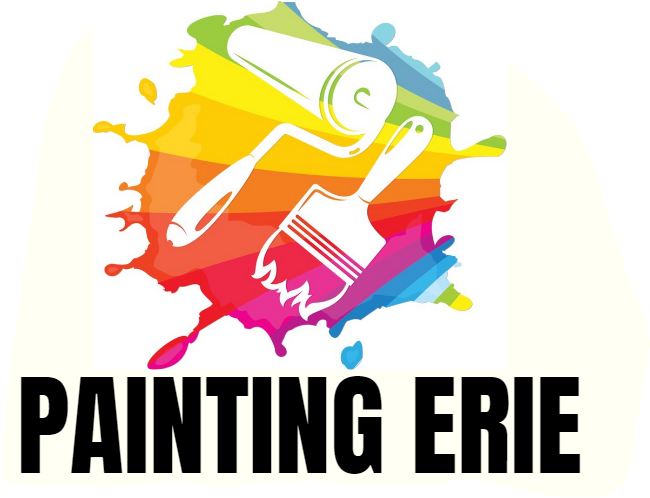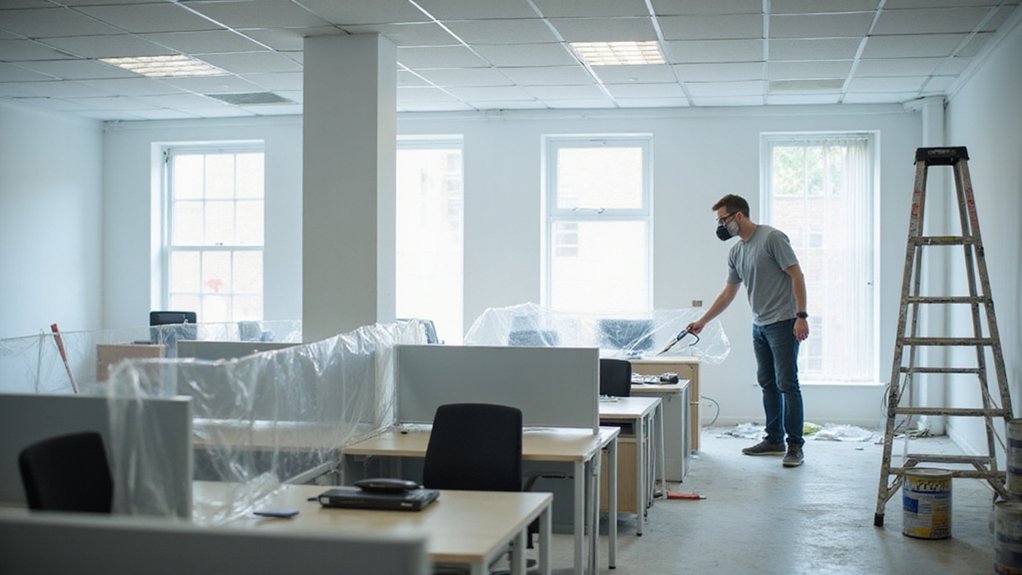As you commence on an office painting project, you’re likely wondering how to minimize interference to your daily operations. It’s a valid concern, considering the potential impact on productivity, employee morale, and ultimately, your bottom line. To set yourself up for success, you’ll need to carefully assess the scope, develop a realistic timeline, and coordinate with employees and stakeholders. By doing so, you’ll be well on your way to a successful change – but that’s just the beginning.
Assessing the Scope of the Project
Before diving into the actual work, take a step back to gauge the magnitude of your office painting project. You’ll want to evaluate project constraints, such as budget, available resources, and any regulatory requirements.
Next, take a close look at your workspace layout. Analyze the size and shape of each room, including any obstacles like pillars, corners, or built-in shelving. Think about how these factors will impact your painting strategy and logistics.
Consider the flow of foot traffic and how you can minimize interference with your team’s daily activities. By taking the time to thoroughly assess the scope of your project, you’ll set yourself up for success and avoid costly mistakes down the line. Additionally, consider scheduling a professional evaluation to ensure accurate price quotations for the painting job.
Developing a Realistic Timeline
As you move forward with your office painting project, you’ll need to create a realistic timeline that takes into account the scope of work, available resources, and potential roadblocks. This timeline will serve as a guide for scheduling preparation, resource allocation, and overall project management.
Identify the specific areas of the office that need painting, and allocate them accordingly. Determine the number of workers needed to complete the project within a reasonable timeframe. Establish a contingency plan for unexpected delays or setbacks.
Schedule regular check-ins with your painting team to guarantee the project is progressing as planned. Build in some flexibility to your timeline to accommodate unexpected changes or requests. For efficient completion, consider hiring professionals who can paint commercial properties swiftly, often within a single day.
Coordinating With Employees and Stakeholders
Most office painting projects involve multiple stakeholders, including employees, management, and potentially even clients or customers. To guarantee a smooth project, you’ll need to develop effective communication strategies that cater to each group’s needs.
Start by holding a town hall meeting or sending a company-wide email to update everyone on the schedule, scope of work, and expected disruptions. Be transparent about the potential impact on daily operations and provide alternatives, such as temporary work arrangements or remote work options, to minimize productivity loss.
Designate a point person to field questions, address concerns, and provide regular project updates. By keeping stakeholders informed and involved, you’ll build trust and cooperation, securing a successful project that meets everyone’s needs.
Preparing the Workspace
Since you’ve already communicated with stakeholders, it’s time to focus on preparing the workspace for painting. This integral step guarantees a smooth painting process with minimal disruption to your daily operations.
Start by:
- Designating temporary workspaces for employees who’ll be displaced during the painting process
- Establishing disruption minimizing guidelines, such as noise restrictions or access limitations
- Covering furniture, computers, and other sensitive to paint fumes or spills
- Labeling areas that are off-limits during the painting process
- Identifying emergency exits and guaranteeing they remain accessible at all times
Executing the Painting Plan
How will you guarantee a flawless execution of your office painting project? By breaking down the process into manageable tasks, you’ll secure a smooth and efficient workflow. Identifying project milestones, such as completing a specific area or finishing a coat of paint, will help you stay on track and allocate sufficient resources.
This includes assigning tasks to team members, and providing them with the necessary tools and materials. As you execute your plan, maintain open communication with your team and stakeholders to address any concerns or issues that may arise. By doing so, you’ll be able to minimize delays and verify a successful project outcome.
Maintaining Business Continuity
Set up a temporary workspace to keep your daily operations humming while the painting project is underway. This allows you to maintain business continuity and minimize disruption.
When identifying alternative work spaces, consider the following:
- Examine temporary relocation options, such as nearby coworking spaces or satellite offices.
- Designate a “quiet room” for focused work or video conferencing.
- Set up temporary desks or workstations in a conference room or common area.
- Identify key team members who can work remotely during the painting project.
- Develop a communication plan to keep team members informed of any changes or updates.
Managing the Cleanup Process
Tackle the mess left behind by paint spills, drips, and splatters by getting a head start on cleanup. You’ll want to establish a clear plan for managing the cleanup process. This involves optimizing post-project cleanup by setting aside dedicated time for this task.
Managing contractor communication is key here. Guarantee your contractor understands the importance of containing messes and cleaning up as they go. This will prevent paint from spreading to other areas, making the cleanup process more efficient. Also, designate a specific area for cleaning supplies, making it easy for the contractor to access what they need.
Frequently Asked Questions
Can We Paint During Regular Business Hours?
You can paint during regular business hours, but you’ll need to ponder the project timeline and employee expectations; manage these factors well to avoid delays, ensuring a smooth, disturbance-free experience for your team and clients.
Should We Choose a Matte or Glossy Finish?
When selecting a paint finish, you’ll choose between matte and glossy sheen options, considering how they’ll impact your space’s ambiance. Matte finishes hide imperfections, while glossy ones reflect it, so think about the overall aesthetic you’re aiming for in your paint color selection.
Can We Reuse Old Paint or Buy New?
You’ll need to assess the condition of your old paint before deciding; consider paint thinning options or investigate local paint recycling programs, but if the paint is old or incompatible, it’s often better to buy fresh paint for a professional finish.
Will the Painters Need Access to Our Break Room?
You’ll need to decide if you’re comfortable with painters accessing your break room, which might require inconvenient access points, or if you’ll set up a temporary break room closure to minimize interruptions during the project.
Will the Smell of Paint Affect Employees With Sensitivities?
You’ll want to prioritize paint fumes management to address employee health concerns. Consider relocating sensitive staff during peak painting hours or providing air purifiers to minimize the impact of lingering fumes on their well-being.

